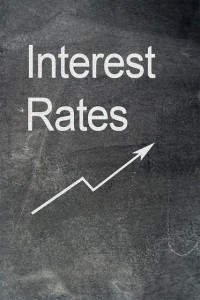Languishing Interest Rates Don’t Have To Mean Languishing Returns

Experiencing three decades of long-term interest rate declines and six years of pretty many near-zero rates on the shorter end of the curve, the US bond market has seemingly reached an inflection point.
There are few economists that are currently predicting significantly higher interest rates shortly given scarcity of yield in the international fixed-income marketplace and the high demand from investors at both the institutional and retail levels.
This presents a challenge for fixed-income investors, and it’s a pressing one: How does an investor build a portfolio that is resilient against rising rates, but also delivers attractive returns in this environment?
A passive approach relying on declining interest rates to be the primary vehicle for returns isn’t likely to deliver the performance that your clients are accustomed to. The past 30 years have caused the duration—the interest-rate sensitivity of the Barclays US Aggregate Bond Index to creep steadily higher…while the yield has steadily fallen.
This is a dangerous combination because the biggest risk in this market, by far, interest rate changes. Basing an investment strategy on the Barclay’s index in today’s market with similar duration and yield characteristics, would cause a principle loss more than 3% over a 12 month period if a 100 basis point interest rate increase were to be introduced.
These losses become a significant issue for the asset allocation component that often represents the traditional part of diversified investment portfolios.
Also- if you think that a 100 basis point jump in yields is highly unlikely, make sure that you take into consideration that so far, for much of 2015, the yield on the ten years US Treasury was well below 2%. A year before, it was closer to 3%. None of these indicators point to the notion that the solution for investors is to actively manage portfolio durations. It’s difficult to forecast timing and magnitude of interest-rate changes and betting heavily on rising rates is just as risky of a strategy as taking a ‘hands-off’ stance.
Perhaps a more effective, prudent strategy for investors is to take appropriate measures to ensure that their portfolios have a wider variety of risks—meaning a broader range of opportunities.
Taking a proactive approach provides several benefits—being able to construct a broader-based portfolio for today’s transitioning bond market being one of them.
By far, the simplest way to expand the vehicles behind bond portfolio returns is to include a broader range of bonds. 30% of the Barclays index is Treasury debt. Keeping in mind that Fannie Mae and Freddie Mac continue to remain in conservatorship, over 75% of the index has government backing.
Exploring investment areas beyond the Bellwether Index is not taking on more risk, necessarily. It could be argued that the diversification of risks offer the potential for minimizing and reducing volatility in the portfolio.
Nearly 2/3rd of new, emerging market debt is currently rated investment grade—issuing countries, in a large number of cases, have stronger balance sheets and demographic trends than the developed market counterparts in many parts of the world.
For complete protection from rising rate effects, one might look towards investing in TIPS and floating-rate notes—the latter of which are vehicles whose coupons are periodically reset to reflect changes in short-term interest rates. Floating-rate notes posted solid gains in 2004, 2005, and 2006—the last period that the US Federal Reserve tightened rates.
GLOBAL INCOME OPPORTUNITIES
The majority of the battle in bond investment is discovering those attractive sources of income. One of the best ways to do that in today’s marketplace is to look globally.
The arena for fixed-income investment strategies triples in size by taking the focus off of a US-based investment set to an international set. Doing so also does not necessarily require taking on significantly higher levels of risk or volatility. Australia, New Zealand, and South Korea are all highly rated, developed markets that offered higher yields on their ten-year government debt at the end of Q1 2015.
This same ideal held true in specific investment grade emerging markets like Mexico, Thailand, and the Phillippines.
.
Here again, a passive approach can have its risks too—exposure to foreign currency may increase the index’s volatility. The key takeaway? Investors must realize that adding global securities and global currencies to diversify your portfolio results in a broader opportunity set. Active managers with the capability to sift through these opportunities have access to significant potential benefits.
